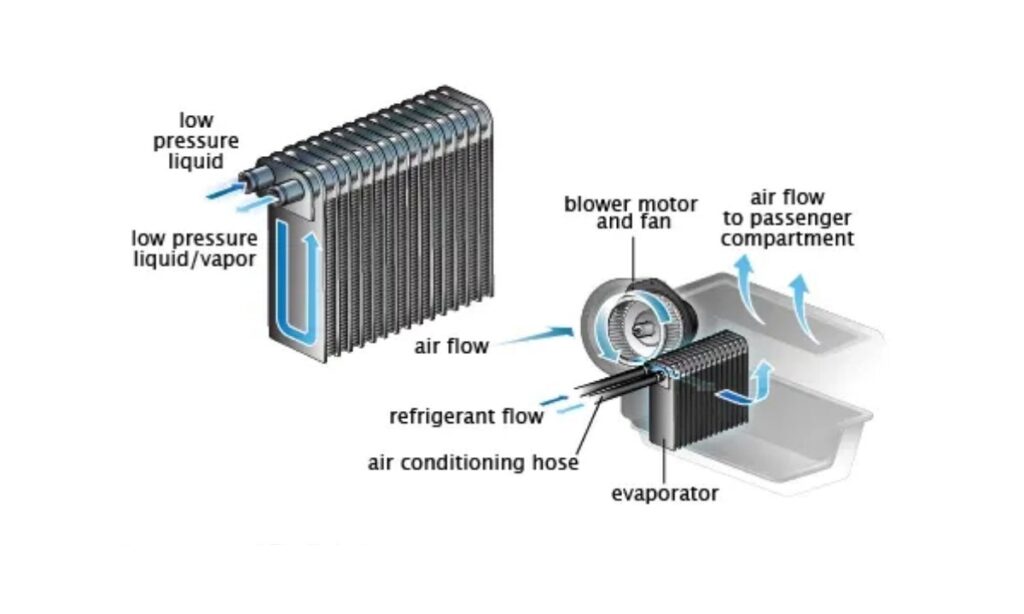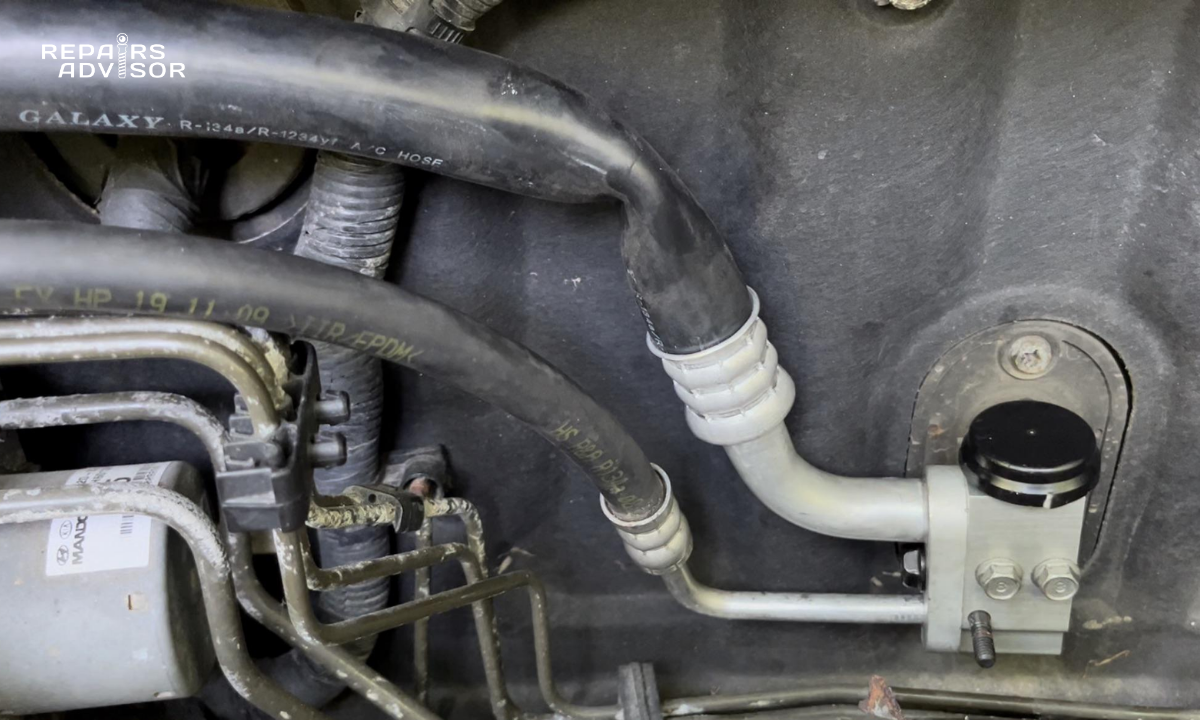Ever wonder how that super-cold refrigerant makes its way from your engine’s compressor to the components that actually cool your car’s air? It travels through the air conditioning (A/C) hose! This isn’t just any old rubber hose; it’s a specially constructed, high-pressure line with custom aluminum fittings crimped onto each end. Its sole purpose is to transport refrigerant, ensuring it reaches the right places to cool the air before it blasts through your dashboard vents.
Because your A/C hose constantly deals with very high refrigerant pressures and temperature changes, it can eventually wear out or get damaged. When that happens, it spells trouble for your entire A/C system!
How to Tell if You Have a Bad Air Conditioning Hose
Spotting a bad A/C hose usually comes down to two main clues:
- Your A/C Isn’t Blowing Cool Air Through the Dashboard Vents:
- This is almost always the first and most noticeable sign. If your A/C used to be an ice machine but now it’s just pushing warm air, or air that’s barely cool, a faulty hose is a prime suspect. Why? Because the hose might have come loose, suffered internal damage, or simply worn out and developed a leak. Any loss of refrigerant, even a small one, will drastically reduce your A/C’s cooling power. Your mechanic can perform a leak test to pinpoint the exact cause of the refrigerant loss and confirm if the hose is indeed the problem.
- You See Physical Damage to Your Air Conditioning Hose:
- If you’re comfortable peering under the hood and know what your A/C hoses look like (they’re typically thick, black rubber lines with metal fittings), you might be able to spot obvious physical damage. Keep an eye out for any of these issues:
- Abrasions, cracks, cuts, tears, or breaks on the rubber portion of the hose.
- Visible leaking or dripping of refrigerant or refrigerant oil from the hose itself. Refrigerant is clear and evaporates quickly, but it’s mixed with a lubricating oil that can leave a greasy residue or dirt buildup around the leak site.
- Leakage from where the hose connects at either end (the metal fittings).
- Exposed threads on the connections at either end of the hose, indicating a loose or improperly tightened connection.
- If you’re comfortable peering under the hood and know what your A/C hoses look like (they’re typically thick, black rubber lines with metal fittings), you might be able to spot obvious physical damage. Keep an eye out for any of these issues:

Should You Drive Your Car with a Bad A/C Hose?
While driving your car with a bad A/C hose isn’t a direct safety hazard like faulty brakes, there are definitely some important considerations:
- Comfort and Alertness: Driving without A/C in hot weather is plain miserable. Being uncomfortable and sweating can actually affect your alertness and focus behind the wheel, making long drives draining and unpleasant.
- System Contamination: A damaged A/C hose, especially one that’s leaking, also exposes the inner workings of your entire A/C system to moisture and other contaminants from the outside air. Moisture is the archenemy of A/C systems, as it reacts with refrigerant to form corrosive acids, which can quickly damage expensive components like your compressor and condenser.
- Cost: The best (and least expensive in the long run!) course of action is to get your car to a mechanic ASAP to get that bad hose fixed. The longer you wait, the higher the risk of further, more expensive damage to other A/C parts.

How Do You Fix a Bad Air Conditioning Hose? (Leave It to the Pros!)
Replacing an A/C hose isn’t a DIY job, as it involves specialized equipment and handling of regulated chemicals. Your mechanic will follow a strict process mandated by federal law to prevent refrigerant from escaping into the atmosphere (where it damages the Earth’s ozone layer). Here are the steps involved:
- Recover the Old Refrigerant: First, your mechanic will use a special machine to safely recover and recycle any remaining refrigerant left in your A/C system. This is legally required and prevents environmental harm.
- Replace the Bad Hose: The damaged A/C hose will be carefully removed and replaced with a new, high-quality part.
- Create a Vacuum: After the new hose is installed, the mechanic will use a vacuum pump to evacuate the entire A/C system. This process removes any air and, crucially, any moisture that might have entered the system during the repair.
- Recharge the A/C System: With the system under vacuum, it’s then recharged with the precise amount of new refrigerant (and typically a small amount of fresh A/C oil) using specialized charging equipment.
- Leak Check: After recharging, the mechanic will perform a final leak check to ensure the new hose and all connections are perfectly sealed.
- Verify Cooling Performance: Finally, they’ll verify that your A/C system is blowing cool air through the vents, confirming the repair was successful.
Can You Replace a Bad Air Conditioning Hose Yourself?
Unless you hold an EPA-approved Section 608 License or a universal refrigerant handler’s license, the answer is a resounding absolutely not! It is illegal to vent refrigerant into the atmosphere. Handling refrigerant requires specialized training, equipment, and certification. Without a doubt, this is a job for your trusted mechanic, who has all the necessary tools and expertise to replace a bad A/C hose properly and legally!
